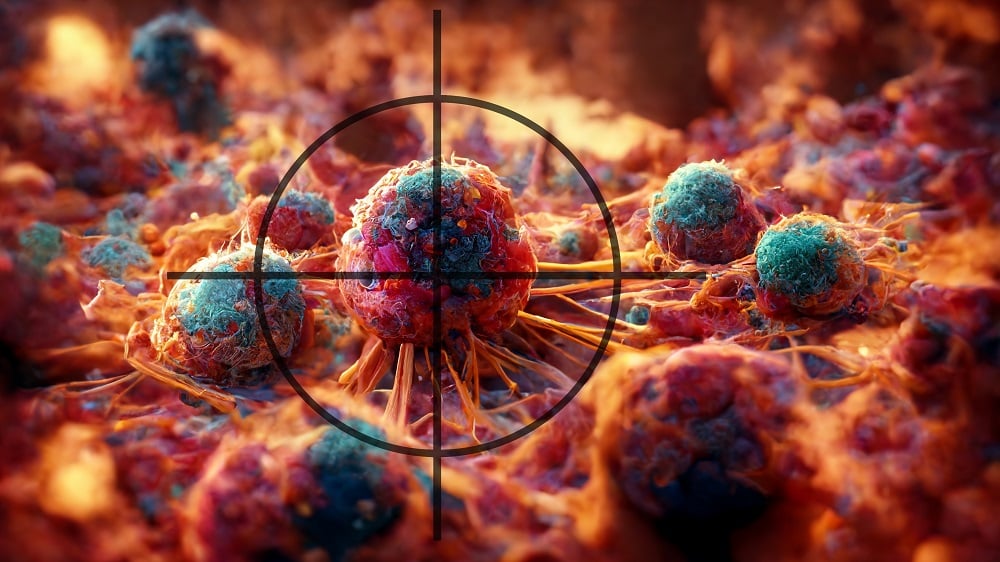New research in Aging Cell has suggested that targeting senescent cells based on their surface proteins (surfaceome) may be effective in dealing with them.
Focusing on what’s easiest to target

Read More
Senescence and the SASP have well-known markers, such as p16, p21, and the well-known SA-β-gal [1]. However, these markers are not particularly specific. Examination of the proteins (proteome) and RNA transcriptions (transcriptome) of these cells provides more information, but that information is not readily available from the surfaces of living cells, which provide the targets of potential drugs.
While previous research has found some molecules that become more common on cells’ surfaces as they become senescent [2, 3, 4], including PD-L2, which helps cells evade the immune system [5], it has proven difficult to translate this basic science into applied biotechnologies. These researchers, therefore, sought to create a more detailed map of the surfaceome, specifically looking for compounds that appear in considerably greater numbers on senescent cells and are feasible to target with drugs.
Different cells give different results
This study was conducted on four different cell types: human lung fibroblasts (NHLFs) and umbilical cord cells (HUVECs) along with astrocytes (ASTs) and embryonic fibroblasts (MEFs) taken from mice. Multiple methods were used to induce senescence, including genotoxins, oxidative stress, and proteosome-related stress, although not all methods were used for all cells. These inducers had mostly expected effects, upregulating well-known inflammatory SASP chemokines.
The differences in method and in cell type drastically affected the surfaceomes of the induced senescent cells. Cells that were exposed to oxidative stress had transporter-related changes, while other cells had changes relating to cell adhesion. Among the three combinations of human cell types and senescence inducements that were used, only 27 surface molecules out of hundreds were changed in common between them, and among the five combinations used for the mouse cells, there was only a single one: N(4)-(beta-N-acetylglucosaminyl)-L-asparaginase (AGA).
Cell type mattered more than the choice of senesence inducer, and the effects on human cells were much greater than on murine cells. Cell type even sometimes reversed the direction of the change in proteins (from 20% to 40% in the three head-to-head comparisons used), even when the inducer was the same. However, this also allowed these researchers to develop signatures: by examining populations of cells, researchers are able to predict what sort of stress brought them to senescence, whether through DNA damage, oxidative stress, or proteasome interference.
Towards new senotherapeutics
This information was put to use in looking for potential new drugs. Four of these proteins, PLXNA1, PLXNA3, PTK7, and CYB5R1, were found to be almost nonexistent outside of senescence and common among various populations of senescent cells, making them prime candidates for senotherapeutic targeting. Examination of 3-month-old and 20-month-old mice found that these proteins do indeed form on the surfaces of naturally senescent cells. Similarly, examining an established dataset found that expression of these proteins coincided with the well-known senescence marker p16ink4a.
These surfaceome markers are already associated with cancer. In fact, targeting PTK7 is already being explored as a cancer therapy [6]. Therapeutics that affect these surface markers, therefore, might be effective in handling some forms of both senescence and cancer: two age-related problems that are sometimes in opposition and sometimes coincide.
Literature
[1] Demaria, H. S. A. N. J. M.(2018). Hallmarks of Cellular Senescence. Trends Cel. Biol, 28, 436-453.
[2] Kim, K. M., Noh, J. H., Bodogai, M., Martindale, J. L., Pandey, P. R., Yang, X., … & Gorospe, M. (2018). SCAMP4 enhances the senescent cell secretome. Genes & development, 32(13-14), 909-914.
[3] Kim, K. M., Noh, J. H., Bodogai, M., Martindale, J. L., Yang, X., Indig, F. E., … & Gorospe, M. (2017). Identification of senescent cell surface targetable protein DPP4. Genes & development, 31(15), 1529-1534.
[4] Mrazkova, B., Dzijak, R., Imrichova, T., Kyjacova, L., Barath, P., Dzubak, P., … & Hodny, Z. (2018). Induction, regulation and roles of neural adhesion molecule L1CAM in cellular senescence. Aging (Albany NY), 10(3), 434.
[5] Chaib, S., López-Domínguez, J. A., Lalinde-Gutiérrez, M., Prats, N., Marin, I., Boix, O., … & Serrano, M. (2024). The efficacy of chemotherapy is limited by intratumoral senescent cells expressing PD-L2. Nature cancer, 5(3), 448-462.
[6] Jie, Y., Liu, G., Feng, L., Li, Y., E, M., Wu, L., … & Gu, A. (2021). PTK7-targeting CAR T-cells for the treatment of lung cancer and other malignancies. Frontiers in Immunology, 12, 665970.








